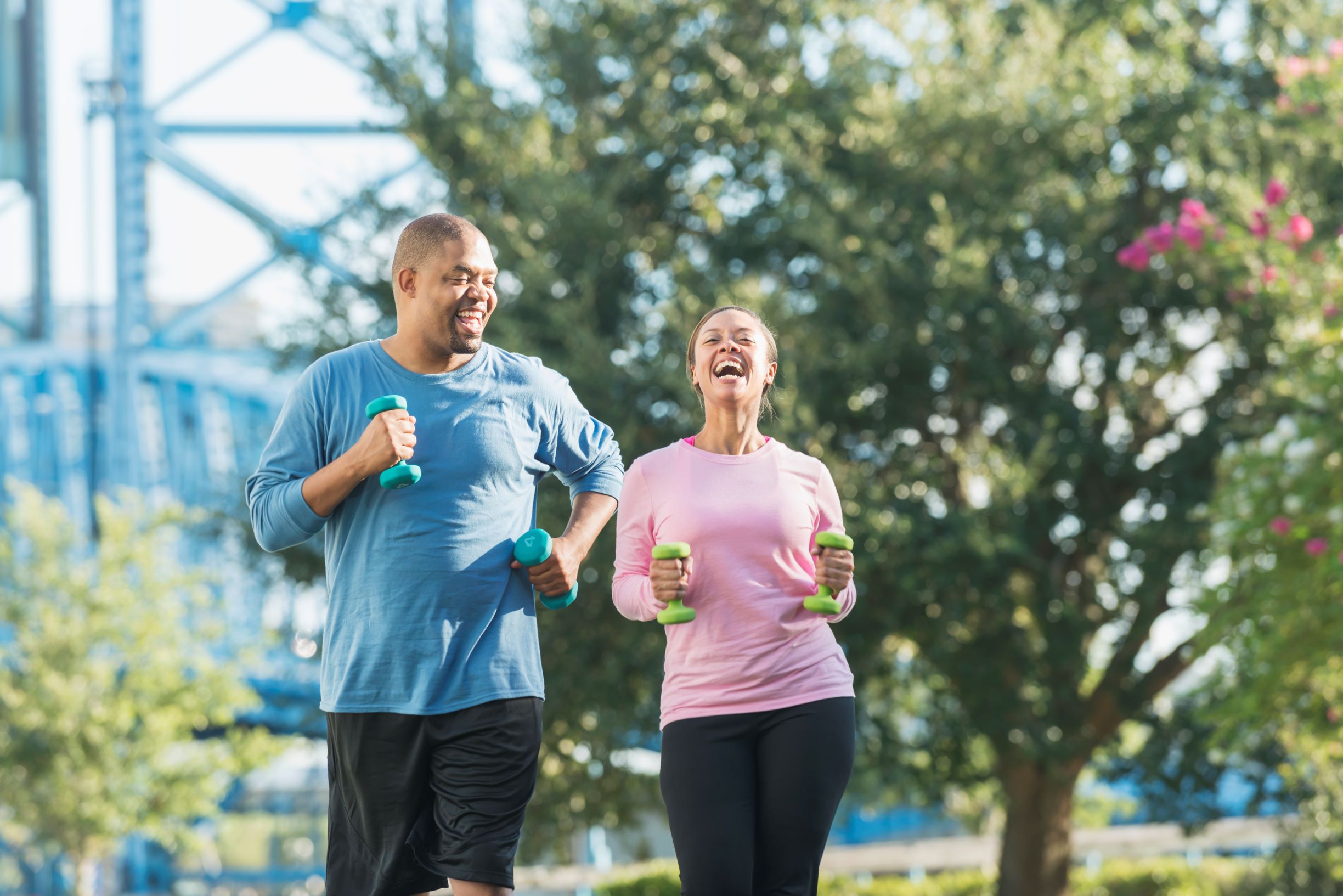Walk the Walk for Heart Health: Fun Ways to Get Your Body Moving
Do you love your daily stroll around the park or your neighborhood just to look at the birds and smell the May flowers in bloom? Well that’s perfect because here’s a bonus: Walking may be all the exercise you need to keep your heart healthy. In fact, just one hour of walking burns approximately 300 calories!
While every step helps, increasing the energy you use during your walk will enhance the benefits. In addition to that, walking is even better for your heart when you can incorporate additional movements to really get your body moving.
Consider these unique ways to walk for heart health, and take someone along with you for the stroll to keep you motivated. In fact, have a child come along as well if you can, as the child may inspire you to laugh a little while having some unbridled fun.
1. Go Backward
You might not be able to move as quickly, but walking backwards will get you to use the muscles you normally don’t. Specifically, it can help strengthen the muscles at the back of your thighs, which is especially important to prevent knee and hip arthritis or osteoporosis.
To make it even more enjoyable, see if you can keep pace with the child. The child will either have to take large steps, which will help increase his or her motor skills, or you will have to take shorter steps. That means further using muscles you wouldn’t typically use as much when walking normally.

Walking is an enjoyable and beneficial exercise for heart health. Taking children along can make the activity more fun, allowing you to smile and laugh with them while living in the moment.
2. Walking Lunges
As you walk, take large steps and bring your other knee close to the ground in a lunging motion. You’ll strengthen the muscles in the front of your thighs, as well as increase the mobility in your knees and ankles. It will also further assist with balance and coordination, which is especially helpful for seniors.
Note that lunges can be very challenging, so don’t expect too much from yourself. You might only be able to do a few at a time, but with practice, your legs will grow stronger.
3. Tap ‘n Clap
This type of walk can be considered a full-body workout, or even a dance that gets everyone watching. As you’re walking, lift your knees higher up than you normally would and tap one knee with one hand at a time. Try clapping in between taps. In addition to working your legs and arms, it’s definitely a fun way to exercise your coordination skills.
4. Carry Dumbbells
Your arms naturally move when you walk, so carrying a 2-pound dumbbell in each hand during your walk will allow you to build arm strength at the same time. The natural motion with the weights in your hands will likely add a little bounce to your step as well.
The more energetic your walk is, the more benefits you will gain.

Carrying dumbbells during your walk gives you the added benefit of building up those arm muscles. Having someone you love walking with you as well makes it all that much better.
5. Play Games
Walking for heart health is more fun when you bring someone along with you. When you do, you can play fun games like “20 Questions,” “Truth or Dare,” or “I Spy.” You can even collect rocks or try to find clouds that look like animals.
Whatever you can do to make your walk more enjoyable will motivate you to continue along the path toward better health.
6. Walk in the Woods
Speaking of paths, get off the beaten ones and try a nature walk on unpaved trails. Walking on gravel or dirt is different than walking on cement, which can help you further increase balance and coordination. Choose trails that are not overly rocky or sloped in order to avoid tripping.
As you are walking, try to identify the names of trees, flowers, leaves, or animals you see along the way just for fun.
The above are only a few ways to make walking for heart health more enjoyable and beneficial. Do you have any other ideas? Sure you do! You can come up with something different to do every day during every walk. You see, it doesn’t matter so much how, how long, or where you walk – as long as you get moving.
As always, consult with a physician before beginning any exercise routine, especially if you have been diagnosed with a heart-related medical condition. Not every activity is ideal for every person, even an activity as simple as walking. Be sure to listen to your body as you are exercising. It will tell you if you are overexerting or hurting yourself.
For additional tips on how to improve your heart health, visit our blog page or make an appointment to see one of our cardiologists.




